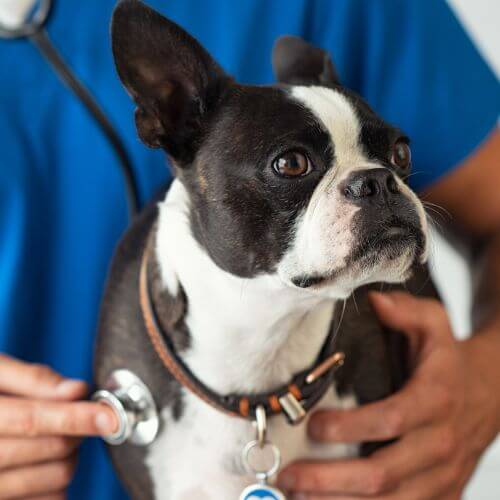Veterinary Services
Pet Anesthesia and Patient Monitoring at Brown Creek Animal Hospital in Polkton, NC
Ensuring the safety and comfort of pets during medical procedures is a top priority at Brown Creek Animal Hospital. Our comprehensive approach to pet anesthesia and patient monitoring is designed to minimize risks and provide peace of mind for pet owners.
Ensuring Safe Procedures with Pet Anesthesia and Monitoring
At Brown Creek Animal Hospital, we are dedicated to providing the highest level of care during your pet’s medical procedures. Our specialized approach to pet anesthesia and patient monitoring ensures the utmost well-being of your furry companions.
We employ thorough pre-anesthetic evaluations, personalized anesthesia plans, and continuous monitoring to minimize risks and enhance recovery. Our experienced team is committed to providing compassionate and attentive care, ensuring your pet’s well-being throughout their procedure. Trust us to keep your pet in the best hands at every step of their medical journey.
The Importance of Patient Monitoring
Patient monitoring is a critical component of our approach to pet anesthesia and patient care. During any procedure that requires anesthesia, a member of our team is dedicated to continually assessing the pet’s vital signs. This includes monitoring the heart rate, respiratory rate, blood pressure, and other critical parameters. By closely observing these indicators, our team can quickly identify and address any potential complications, thereby reducing the risk of adverse reactions.
Our patient monitoring protocol is designed to provide a comprehensive picture of the pet’s physiological state, ensuring that any changes are detected and managed promptly. This vigilant monitoring helps maintain the safety and well-being of pets throughout their procedures.
The care we provide does not end once the procedure is completed. Post-anesthesia monitoring is equally important to ensure a smooth recovery. Pets are closely observed as they regain consciousness, and their vital signs are continually checked to ensure they are recovering as expected. Any signs of discomfort or complications are addressed immediately, providing a safe and comfortable environment for pets as they wake up from anesthesia.
Understanding Pet Anesthesia
General Anesthesia:
For certain medical and surgical procedures, general anesthesia is necessary to ensure that pets are unconscious and pain-free. This approach is essential for more invasive surgeries and procedures that would otherwise cause significant discomfort or stress.
At Brown Creek Animal Hospital, we take every precaution to ensure that general anesthesia is administered safely. Before any procedure requiring general anesthesia, we perform a thorough physical examination and conduct blood work to identify any underlying health issues that might increase anesthetic risk. This pre-anesthetic assessment helps us tailor the anesthesia protocol to each pet’s specific needs, further enhancing their safety.
The process begins with administering a sedative to help the pet relax and reduce anxiety. This is followed by an intravenous drug that induces complete anesthesia. A breathing tube is then placed into the trachea to deliver a mixture of gas anesthetic and oxygen, maintaining the pet’s unconscious state throughout the procedure.
Our veterinary technicians continuously monitor vital signs, including heart rate, respiratory rate, and blood pressure, to ensure the pet remains stable.
Local Anesthesia:
For minor surgical or diagnostic procedures, local anesthesia is often sufficient. This type of anesthesia causes a loss of sensation in a specific area, allowing the procedure to be performed without causing pain. Local anesthesia is commonly used for procedures such as biopsies, where a small tissue sample is removed for examination.
To enhance the effectiveness of local anesthesia, we may also use a sedative or anxiolytic (anti-anxiety medication). This combination helps keep pets calm and comfortable during the procedure, ensuring a smoother experience for both the pet and the veterinary team.
Benefits of Our Pet Anesthesia and Monitoring Protocols
The primary goal of our anesthesia and monitoring protocols is to ensure the safety and comfort of pets undergoing medical procedures. By employing rigorous pre-anesthetic assessments, individualized anesthesia plans, and continuous monitoring, we minimize the risks associated with anesthesia and enhance the overall experience for pets and their owners.
Our approach offers several benefits:
- Enhanced Safety: Comprehensive pre-anesthetic evaluations help identify potential risks, allowing us to tailor anesthesia protocols to each pet’s needs.
- Reduced Anxiety: Sedatives and anxiolytics help keep pets calm before and during procedures, reducing stress and promoting a smoother experience.
- Improved Recovery: Continuous monitoring during and after procedures ensures that any complications are promptly addressed, leading to quicker and more comfortable recoveries.
- Peace of Mind for Pet Owners: Knowing that their pets are in experienced hands and receiving attentive care throughout their procedure provides reassurance to pet owners.

